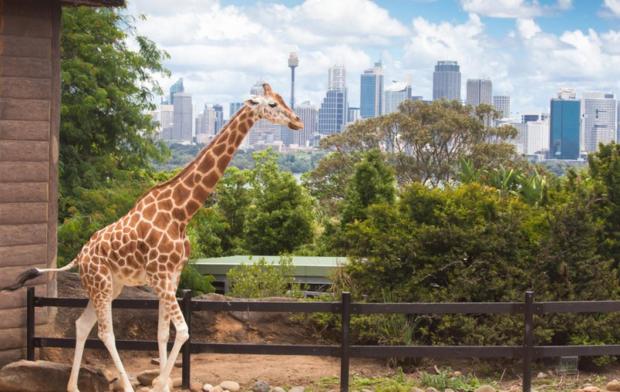
 We are told that we are a nation of couch potatoes, lacking the will and the strength to turn around the obesity tanker. We all need a little help in our quest for a healthier life, and design can play a crucial part. If we designed our towns, cities, homes and workplaces more like animal experts design zoos, we could be one step nearer to reaching our fitness goals – as long as we can have some fun along the way.
We are told that we are a nation of couch potatoes, lacking the will and the strength to turn around the obesity tanker. We all need a little help in our quest for a healthier life, and design can play a crucial part. If we designed our towns, cities, homes and workplaces more like animal experts design zoos, we could be one step nearer to reaching our fitness goals – as long as we can have some fun along the way.
It is reported that British people will be the fattest in Europe by 2025 and that if we want to reverse this we should have a healthier lifestyle by exercising more and eating less. But we are often made to feel guilty for not sticking to these healthy lifestyle plans. I would suggest that before we start blaming people for adopting sedentary lifestyles, we should be taking a step back to look at the design of the environments, towns and cities in which we live.
The link between the design of the built and natural environment and its role in our health and wellbeing has been well explored. Now new research, led by Lancaster University, on “design for health” suggests that the environment, including buildings, cities, urban spaces and transport infrastructure, is closely linked to the lifestyles we adopt.
What is abundantly clear is that, as we shape our environment, it is also shaping us. Our psychological, physiological and physical status, as well as our interactions with other people and with the natural environment, are all affected. A key challenge that governments and policy makers worldwide are facing is how our built environment and infrastructure should be shaped to support healthier behaviours to prevent disease.
First, we should stop focusing on methods that tell people what to (or not to) do and which attempt to change their behaviour simply through media campaigns and punitive measures, such as tax schemes. While seeking to minimise the barriers that prevent healthy behaviours, we should make sure that the design of new environments is taken into account.
Looking to zoos
A good model would be to look at how zoos are designed. Before a zoo is built, it is common practice for zoologists, biologists, animal psychologists, nutritionists, architects, designers and landscape architects to work closely together to create an environment that optimises the living conditions for the animals.
Important environmental elements, such as vegetation, habitat, lighting, materials and each animal’s requirements are taken into account. The ultimate aim is to design an environment that fully supports the animals’ physical, psychological and social wellbeing. Ironically, we do not seem to make the same demands when a town, neighbourhood or workplace environment for humans is planned and designed.
Another opportunity that has recently emerged is the healthy new town NHS initiative. The aim is to radically rethink how we live and take an ambitious look at improving health through the built environment. Ten demonstrator towns will be built across England with community health and wellbeing as their main focus. Clinicians, designers and technology experts will re-imagine how healthcare can be delivered in these places. Although this is a step in the right direction, what it is currently missing is the more holistic approach we have seen in the design of the zoos.
A crucial element in designing these towns so they are places that people would want to live in, is to include community members in their creation. This strategy would help design in health-promoting behaviours, such as access to healthy food outlets or green spaces in which people can walk and exercise.
Embracing playfulness
Playful design – the mapping of playful experiences from games and toys to other non-game contexts – can play an important role here in inviting and encouraging people towards healthier alternatives. For example, the piano stairs project in Stockholm, which converts the metro stairs into a giant functioning piano keyboard – much like the piano made famous in the Tom Hanks film Big (1988) – demonstrates great promise. It encourages commuters to opt for the intriguing new stairway instead of the escalators to enjoy making musical movements as they go up and down.
A project in The Netherlands, meanwhile, illustrates how everyday street furniture, such as lampposts, benches and bollards, can be inexpensively converted into impromptu exercise devices, inviting people to engage in casual activity and socialise with their neighbours. We could therefore envisage several other contexts where playfulness can transform mundane everyday activities into fun ones that encourage people into a more active and social lifestyle.
We could convert building walls into activity walls to encourage stretching of arms and legs through touch; redesign public squares and walkways into interactive dance floors that invite movement and guide you through a city; and transform workplace spaces and public places into “playgrounds” that boost movement and productivity and decrease lethargy.
So, there you have it. If we want to be a nation of lean, mean and healthy citizens, we need to learn from zoos and the animals that live in them. And we need to embrace playfulness and enjoy the place where we live. That way, we can tackle life with a hop, skip and a jump.
Emmanuel Tsekleves is a senior lecturer in design interactions at Lancaster University. This article was originally published on The Conversation (theconversation.com)
[“Source-ndtv”]






